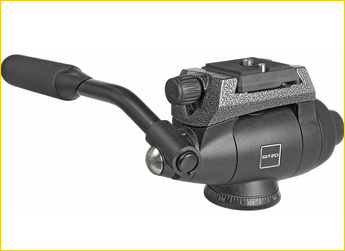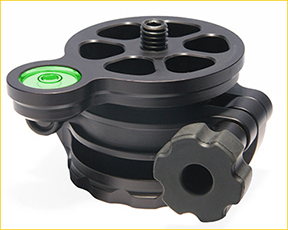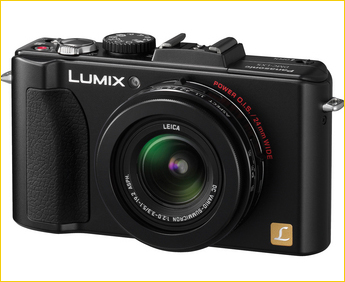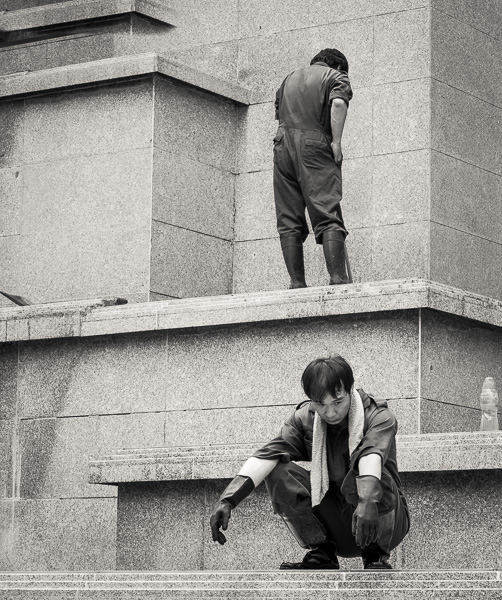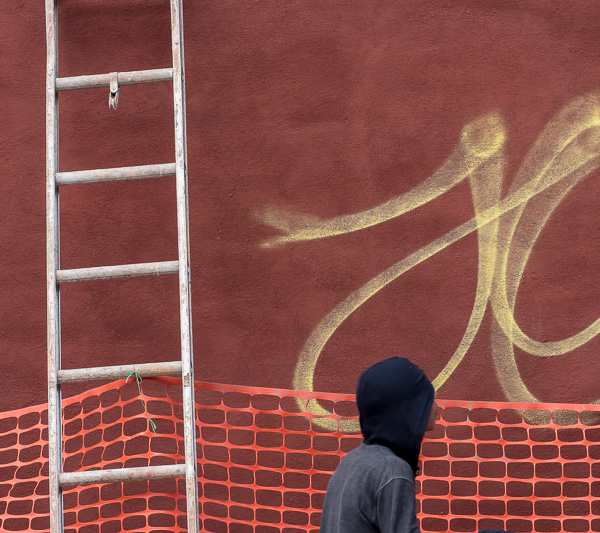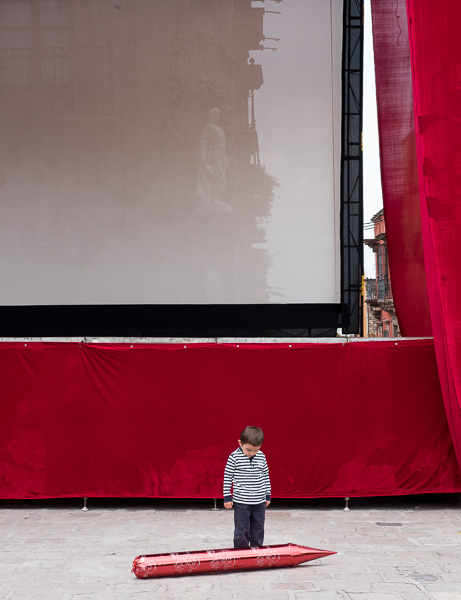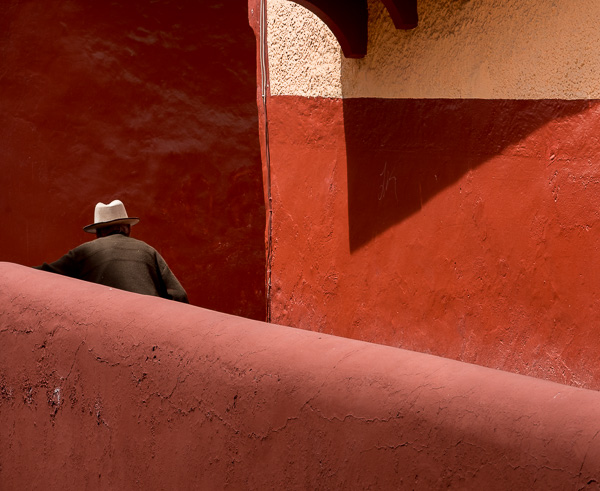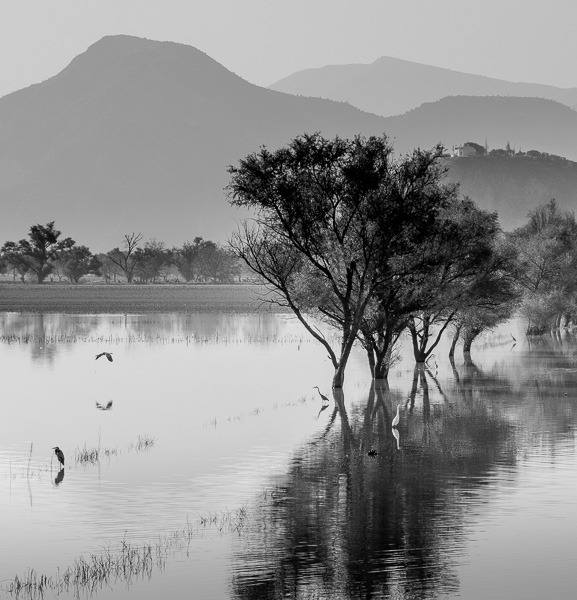
Have you priced a super-telephoto lens recently? Not much has changed since I wrote about500mm and 600mmlenses about 10 years ago. They’re still big, they’re still heavy, and they’re stillreallyexpensive.
But during the past decade an alternative for shooting ultra-long telephoto has sprung up, and it’s popularly calledDigiscoping, especially among birders. More accurately it is known asAfocal Photography.
People have been attaching cameras to telescopes forever. These days there are even specialized digital cameras that attach to telescopes and which produce astronomical images that only a decade or two ago would have been the envy of large observatories.
Terrestrial photographers though need more magnification than even moderately large scopes can provide when these are attached at their prime focal point – in the same way that a lens is attached to a camera. This greater magnification is accomplished by focusing a camera with a lens attached directly to the scope’s eyepiece. In other words, the camera and lens are seeing pretty much what the human eye would see in the same position. Thus, with say a 30X eyepiece attached this is the degree magnification achieved, which is the equivalent to 1,500mm in full-frame 35mm terms.
While attaching a DSLR to the eyepiece of a telescope has always been possible, issues of weight, counterbalancing, mirror and shutter vibration and the like have made it somewhat impractical for most people. But with the advent of small and light weight high-resolution digital camera, with moderately fast lenses and no mirror vibration, modern digiscoping began.
Spotting Scopes vs. Telescopes
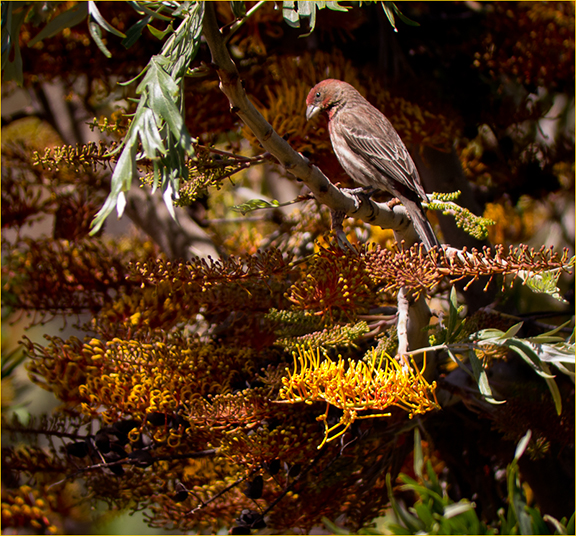
In The Neighbor’s Garden. San Miguel, Mexico
Vortex Razor HD @ 20X with Panasonic GH2 and 20mm f/1.7 @ ISO 160
You can do photography through either a telescope or a spotting scope, though the later is far more convenient. Telescopes are primarily designed for astronomical use. There are numerous types and designs available, including refractors, reflectors, and various mirror lens system (catadioptric). Each have their pros and cons. Reflector systems are preferred for deep sky viewing because of their large apertures and light gathering power. Refractors are preferred for planetary viewing because of their potential for higher magnification. Cats are compromises because of their small size.
One of the reasons not to use an astronomical scope for terrestrial use is that the image is upside-down. This is a non-issue for astronomy, but completely frustrating for terrestrial use.
A Spotting Scope is simply a refractor designed specifically for terrestrial use. It has a built-in prism assembly that inverts the image so that things are right-side-up. Often they have a 45 degree angle to the viewing assembly which can make for more pleasant viewing and more stable photography.
All except the cheapest models come with interchangeable eye pieces. Most people (the vast majority) buy them with a zoom eyepiece, usually in the range of 20X – 60X. For terrestrial viewing even 60X is usually more than what is actually usable due to air shimmer, haze and other atmospheric effects. Most times these scopes are used in the 20X – 40X range. And, while prime eyepieces are theoretically superior, good quality zoom eyepieces are now so good that the differences are minimal and the convenience factor significant.
Brands
In the spotting scope world there are a few brand names that you’ll know, and quite a few that you won’t. Just because you haven’t heard of a company doesn’t mean it isn’t a contender, and similarly just because it has a known name from the photography world doesn’t make it the best.
At the bottom end though you’ll find a large number of no-name and house brands. It should go without saying that you get what you pay for. These are the scopes that you’ll typically find at your local sporting goods store and some camera shops.
The mid-range is populated with names you’ll know from the photographic industry, like Nikon and Pentax, and also from the astronomy arena, such as Celestron and Vixen. The premium models are from names that you’ll likely recognize – Carl Zeiss, Leica, Swarovski, and Kowa – who used to also make cameras and lenses, but have been out of that market for about 30 years.
Those four brands are clearly the cream of the crop, and priced like it. But we all know from our camera and lens buying experience that one really pays a premium for the top-of-the-line brands.
Choosing The Vortex Razor HD
Spotting scopes fall into two main categories –inexpensiveandreally expensive. Yes, I’m being humorous, but it also is mostly true. You can buy a scope for $500 and you can buy a seemingly similar one for $3,500. Superficially they may seem similar, but they will be worlds apart when it comes to optical performance and quality of construction.
If you’re on a budget, then by all means get something that you can afford. If you have no budget constraints then acquiring a top-of-the-line device is a no-brainer. But, if you’re like most people you’ll want to buy the best device that you can while not spending more than you really have to.
When I decided to buy a spotting scope after a great deal of research I ended up purchasing theVortex Razor HD, because it seemed to offer the best combination of price, features, and warranty.B&H carries them. It is not one of the better known brands in terms of name recognition, but in every “shoot-out” by spotting scope users that I’ve read over the past few years the Votex Razor HD comes out at or near the top of the ratings in terms of performance.
The Razor HD also has a no-nonsense lifetime warranty. If anything ever goes wrong with the scope Vortex will repair or replace it without charge. Here’s their warranty statement…
We will repair or replace your Vortex product for any reason at NO CHARGE TO YOU. It doesn’t matter how it happened, whose fault it was, or where you purchased it. You can count on the VIP Warranty:
-
Unlimited Lifetime Warranty
- Fully transferable
- No warranty card to fill out
- No receipt needed to hang on to
If you ever have a problem, no matter the cause, we promise to take care of you.
Don’t you wish that every product came with a warranty like this? It just doesn’t get any better. No other company, not Leica, not Zeiss, not Swarovski has a scope warranty as good.
Spotting Scope Features
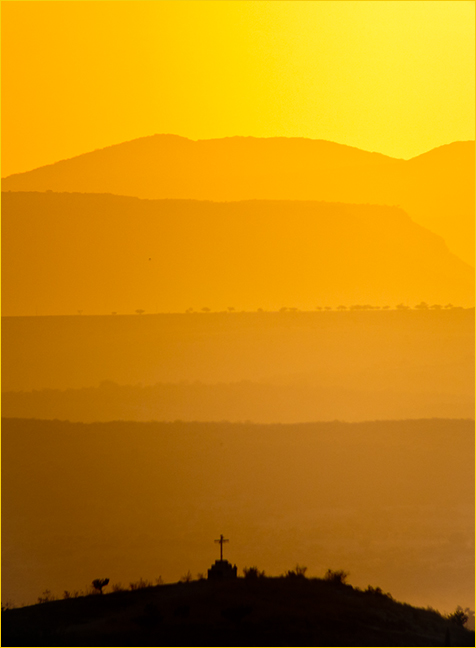
Caldera Ridges. San Miguel de Allende. March, 2011
Vortex Razor HD @ 20X with Panasonic GH2 and 20mm f/1.7 @ ISO 160
Below I’ll be discussing the factors to be considered when choosing a spotting scope both for visual as well as digiscoping use. The Vortex meets all of these criteria, as well as do the other top brands.
Multicoated ED or APO glass
Whether it’s for just visual observing, or photography, the use of multicoated Apochromatic HD or ED glass is very important. This eliminates (for the most part) chromatic aberration and makes the visual and recorded images that much sharper and pleasant to look at. This glass is not inexpensive, and therefore is usually only found in better scopes.
Waterproof
Spotting scopes are for the most part used in tough environmental conditions, usually much more so than camera lenses. This can range from dusty conditions, to humid jungles and swamps, to heavy rain and snow. A high level of water resistance is therefore a must for some users, and is the norm in high-end scopes.
Inert Gas Filled
Because of their use in harsh environment top scopes typically have their internal air evacuated and are filled instead with an inert gas such as Argon. This prevents internal optical elements from fogging up.
Armoured
Most scopes above about $1,500 have “armored” bodies, with tough metal and rubber coatings that resist wear and dents.
Dual range focusing
Because of their long focal lengths, and because they are used at distances from infinity to quite close, spotting scopes need a broad focusing range and a fine micrometer focus adjustment. This is usually accomplished by having dual adjustments – one for coarse and one for fine adjustments.
Rotating Mounting Collar
Subjects for optical view and digiscoping can be at almost any angle, from straight overhead to below one’s feet (over a cliff’s edge, for example). Being able to mount the scope at a convenient angle is therefore critical, and so a rotating collar is almost a must-have.
Sunshade
As with a telephoto lens, a good sunshade is a must, and one that telescopes out from the scope rather than a removable bayonet design is preferable.
Zoom Eyepiece
A spotting scope needs an eyepiece (or eyepieces), and though in theory a prime eyepiece is of the highest quality, a really good zoom eyepiece is much more convenient and also of almost as good quality. A range of 20X – 60X is typical.
Angled vs. Straight Through
Most scopes for terrestrial viewing use an angled design. This allows the scope to be mounted on a tripod at a lower height than with a straight design, which means less susceptibility to wind and tripod shake. They are also more convenient for viewing and shooting when seated.
There’s nothing wrong with a straight-through design though, and so users, especially if digiscoping is going to be the scope’s primary use, will find these to be preferable. Do be sure that that your scope uses a poroprism, so that the image is right way up and unreversed, rather than a less expensive mirror assembly.
Eye Relief and Diameter
There are few things more frustrating than a dim scope image that requires the eye to be exactly centered over the eyepiece, otherwise it dims out or disappears. As with most things, bigger is usually better, and in the case of lens diameter the best scopes are in the 80-85mm range. Anything larger would become much less portable.(This is their front element diameter – not their focal length).
As far as eye relief, check the specs and find one with the best (largest) rating. You won’t regret it.
Misc.
Often it’s the little things that make or break an otherwise great product. Check on things like well-fitting front and rear lens caps, carrying cases and the like.
Tripods and Heads
A spotting scope must be used on a tripod, whether for viewing or digiscoping. These just can not be hand held. Which tripod you use will very much be determined by what you already own and also the type of viewing and shooting that you will be doing.
If you already own a large tripod and plan on doing your viewing from the balcony or back deck – great. Use what you have. On the other hand, if you will be traveling or hiking then a light weight tripod is called for. Carbon fiber is more expensive than metal, but worth the investment.
You probably already own a ball head for photography. Don’t use it for scoping. It’s complete inappropriate. You will need a head with separate controls for pan and tilt. There are a great many to chose from. My personal preference, and one that is used by a lot of birders and digiscopers is theGitzo G2180. At around $250 it isn’t inexpensive, but it works, is small and light weight, and because it is a fluid head is also appropriate for video use.
But, if you’re going to use a head with separate pan and tilt controls, rather than a ballhead, you’ll quickly discover that not having the tripod perfectly leveled is very frustrating. The solution is theAcratech level baseat around $150. I know, I know, the head and base alone come to some $400. A decent light weight carbon fiber tripod will set you back another $500 – $750. I never said this would be easy, or cheap, did I?
Camera Adaptors

There are a great many adaptors available for mounting a camera to the eyepiece of a spotting scope for digiscoping. Vortex makes a kit for the Razor ($199) that consists of a bracket that attaches to the eyepiece mount, and a set of five adaptor rings; 30mm, 37mm, 43mm, 52mm, 55mm, and 58mm. If your lens uses another size you’ll have to buy additional step-up or step-down rings as needed.
This bracket is very well designed, as it allows for comfortable access to the zoom eyepiece’s control ring, and the scope can still be used for visual work with it attached.
What Camera?
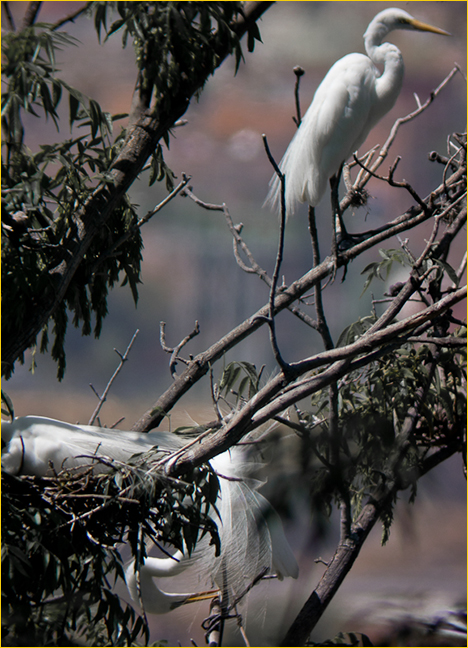
Two Heron. San Miguel de Allende, March, 2011
Panasonic GH2 with Voigtlander 25mm f/0.95 @ ISO 160
Virtually any camera can be attached to a scope. But, just because youcandoesn’t mean that youshould. My experience is that while mounting a DSLR is certainly possible (usually with a 50mm or equivalent lens attached), these tend to be too bulky. Their weight and mass is simply out of proportion to most spotting scopes, and proper aiming, focusing and shooting become an exercise in frustration.
I’m not saying that it isn’t possible, just that it isn’t for me. Your mileage may of course vary.
If you insist on trying to shoot with a DLSR or any interchangeable lens camera, then be aware that the best results will be had with a fast prime lens of “normal” focal length, or maybe a bit wider. The kit zoom that comes with your camera (or even an expensive one) will not be fast enough or able to focus and achieve a large enough image circle when shooting via an eyepiece.
The common wisdom is that a small camera such as thePanasonic LX5should be an ideal digiscoping camera. (You’ll also need the DMW-LA6 Conversion Lens Adapter). (MyLX3 reviewis found here. The current LX5 is quite similar). There are, of course, cameras from Canon, Nikon, Samsung and others that offer similar capabilities, but I am partial to the LX series, and also like that fact that it can take an accessory electronic viewfinder, theLCF1.
Unfortunately there are a lot of compromises associated with using a digicam. Because of their optical construction you’ll need to zoom in quite a bit (all the way) to get a decent sized image. This makes the aperture smaller, and you’ll find that during previewing you see only a small portion of the image due to vignetting. Press the shutter release part way and the vignetting is reduced, but not eliminated. There may indeed be a digicam that produces decent image quality through a scope, but I haven’t seen it yet.
My Preferred Camera
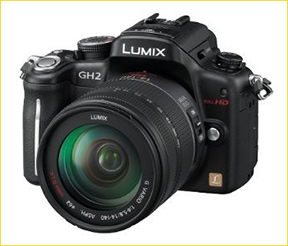
I have found thePanasonic GH2to be an ideal camera for digiscoping. Here’s why.
Other Micro 4/3 or other types of mirrorless cameras may also do the job well.
Firstly, there’s the matter is size and weight. The GH2 is much smaller than most DSLRs, and therefore more convenient to use with a scope than a DSLR. The lens that’s almost ideal for this application is theLumix 20mm f/1.7. This is due to its small size and weight, and also its speed. Stop down to f/2 or 2.4 for greater sharpness, and you still have a relatively fast lens, which will allow higher shutter speeds and lower ISO to be used.
The second advantage is that a mirrorless camera like the GH2 does not suffer from mirror bounce and vibration. It also has an articulated LCD, making many shooting conditions easier to accomplish. It also has an electronic viewfinder, also very convenient for many types of shooting. A DSLR with live view will similarly not suffer from mirror bounce, but won’t have an electronic viewfinder and will be larger and heavier, as will its lenses.
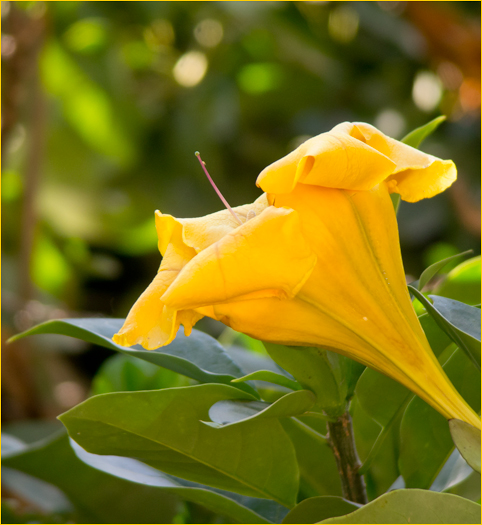
Cropped from Full Image Circle – 20X with 20mm Lumix f/1.7 @ ISO 400
Shooting distance approx 30 meters
The GH2 and 20mm lens (40mm equivalent) provide full coverage of the entire image circle produced by the Vortex. You can then crop the image as you prefer, but you’re starting with the full image available. The camera also has a high enough megapixel count so that even when cropped to a square or rectangle you still have a decent sized file.
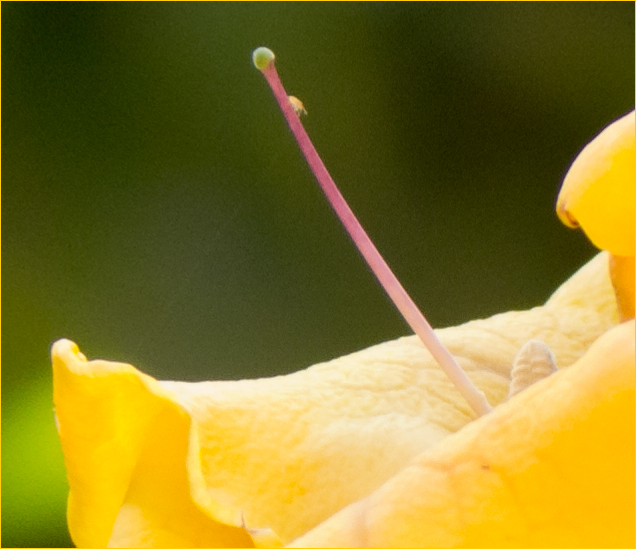
100% crop of above. Shot with camera hand-held against eyepiece at 1/60 sec .
Note the insect on the stamen.
The camera and lens can be mounted via the adaptor kit (with a step-up ring), but I found that for casual use it’s actually easier to simply hand hold the lens to the eyepiece. I rotate the rubber eyepiece collar so that it is about half way retracted, and it provides a nice light-tight seal and support. As long as the scope is well mounted and the light is decent it’s a simple matter to view, focus and then hold the camera to the eyepiece to take a shot. Very convenient.
Chromatic Aberration
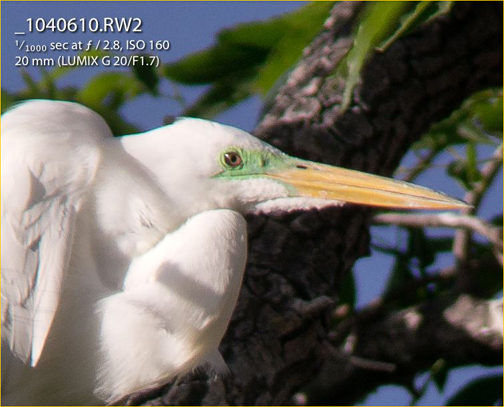 |
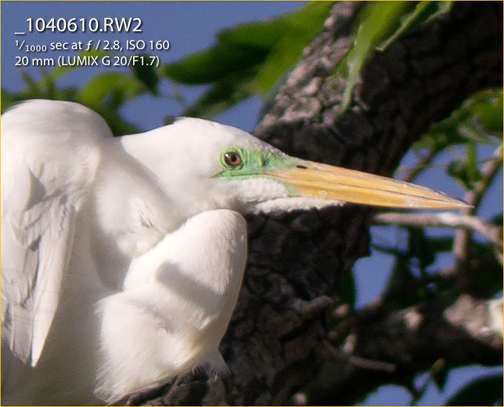 |
| 100% Enlargement. Before CA Adjustment in Lightroom | 100% Enlargement. After CA Adjustment in Lightroom |
Note top edge of Heron’s head.
Even though the Vortex Razor has extra low dispersion glass, there is some cyan chromatic aberration when shooting with the GH2 and 20mm lens. There is no CA when using the scope visually, mind you, but when used with this lens there is. Beats me.
I have found that +100 on the Red/Cyan slider of Lightroom fixes it, and so I have a pre-set that I use on all of these images, solving the problem in a moment.
A Word of Caution
Be aware that there are so many combinations of scopes and cameras and mounting adaptors that it is almost impossible to forecast how any given combination will perform. I therefore urge you to try the particular combination of scope and camera and lens that you have in mind before purchasing. Even just holding the camera and lens up to the eyepiece will be enough to see whether the combination that you have in mind works properly.
Digiscoping Hints and Tips
This is a big topic, and given the variety of scopes and cameras that can be combined the number of permutations and combinations possible are beyond considering in an article such as this. For this reason I will focus on (no pun intended) the combination of the Vortex Razor HD and the Panasonic GH2, the system that I use, and with which I am most familiar. The majority of what is outlined here will also apply to the vast majority of scope / digicam combinations.
Shooting Mode
Obviously you want the shutter speed to be as high as possible. Your effective focal length will be between 2000mm and 4000mm, and vibration is the enemy of sharp pictures. You’ll find though that with a digicam you’ll want to have the lens at or near its widest aperture for obvious reasons.
I therefore prefer to use either Aperture priority mode with the lens just down 1/2 to a full stop, and let the camera take care of the rest. As the light drops, increase the ISO so that you’re shooting at at least 1/250 sec, and preferable higher.
Shutter Release
When shooting stationary subjects you can use the self timer, but when photographing birds or anything where timing is critical you’ll want to use a cable release (physical or electronic). If you don’t have one available for your camera, then good technique can substitute. Do a first press, and then follow through smoothly. Of course a solid tripod and head arede riggeur.
Zooming and Focusing
Your scope’s eyepiece is likely a zoom. You will get the best photographic results when you shoot at its lowest magnification. For visual work, and depending on atmospheric conditions and distance, greater magnification sometimes is possible, or even necessary. But the human eye and brain have an ability to ignore image degradation that just is unacceptable in a photograph. Chances are therefore that you’ll want to be at the lowest magnification for best digiscoping results.
Shooting Video
It certainly is possible to shoot video with a spotting scope, and quite nice results can be achieved. Some digicams act strangely though when shooting video, dropping their field of view dramatically, making it almost impossible to fill the frame. Be aware as well that any camera movement will be magnified dramatically. Don’t even think about panning unless you have a high-end geared or motorized pan tilt head.
Have fun!
The Vortex Razor HD May be Purchased From Our Sponsor B&H Photo-Video
March, 2011
Read this story and all the best stories on The Luminous Landscape
The author has made this story available to Luminous Landscape members only. Upgrade to get instant access to this story and other benefits available only to members.
Why choose us?
Luminous-Landscape is a membership site. Our website contains over 5300 articles on almost every topic, camera, lens and printer you can imagine. Our membership model is simple, just $2 a month ($24.00 USD a year). This $24 gains you access to a wealth of information including all our past and future video tutorials on such topics as Lightroom, Capture One, Printing, file management and dozens of interviews and travel videos.
- New Articles every few days
- All original content found nowhere else on the web
- No Pop Up Google Sense ads – Our advertisers are photo related
- Download/stream video to any device
- NEW videos monthly
- Top well-known photographer contributors
- Posts from industry leaders
- Speciality Photography Workshops
- Mobile device scalable
- Exclusive video interviews
- Special vendor offers for members
- Hands On Product reviews
- FREE – User Forum. One of the most read user forums on the internet
- Access to our community Buy and Sell pages; for members only.






